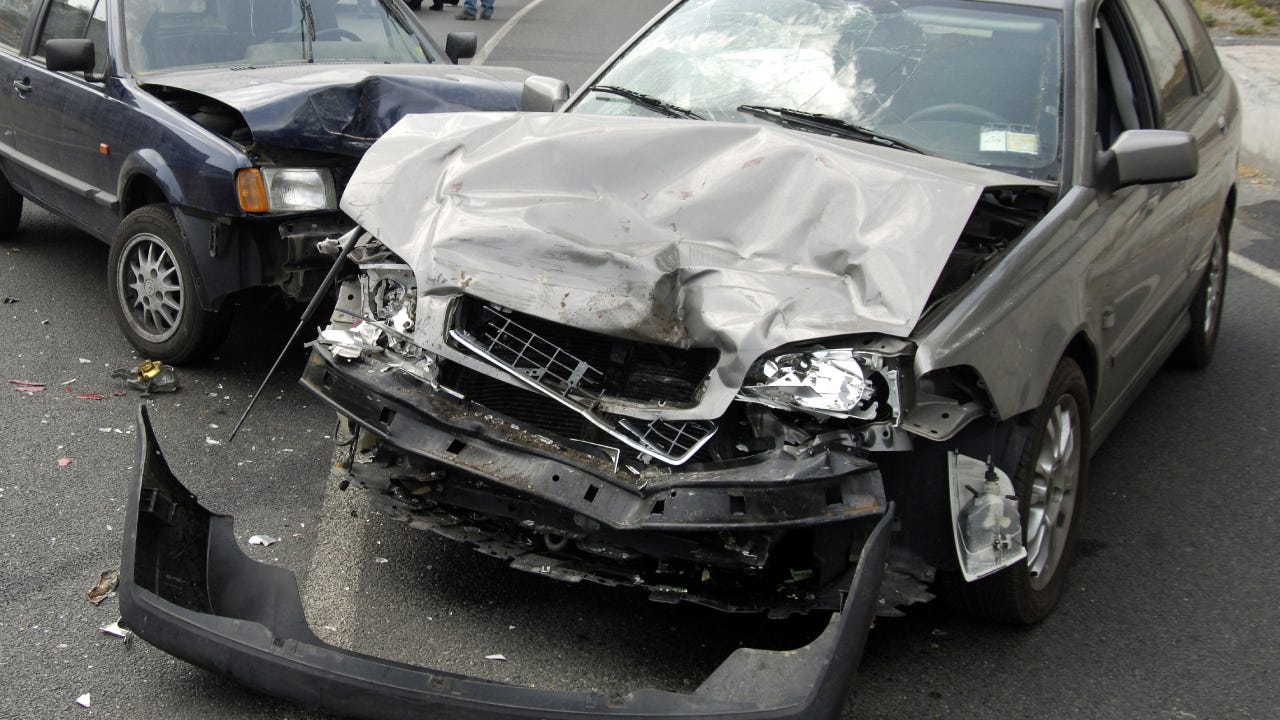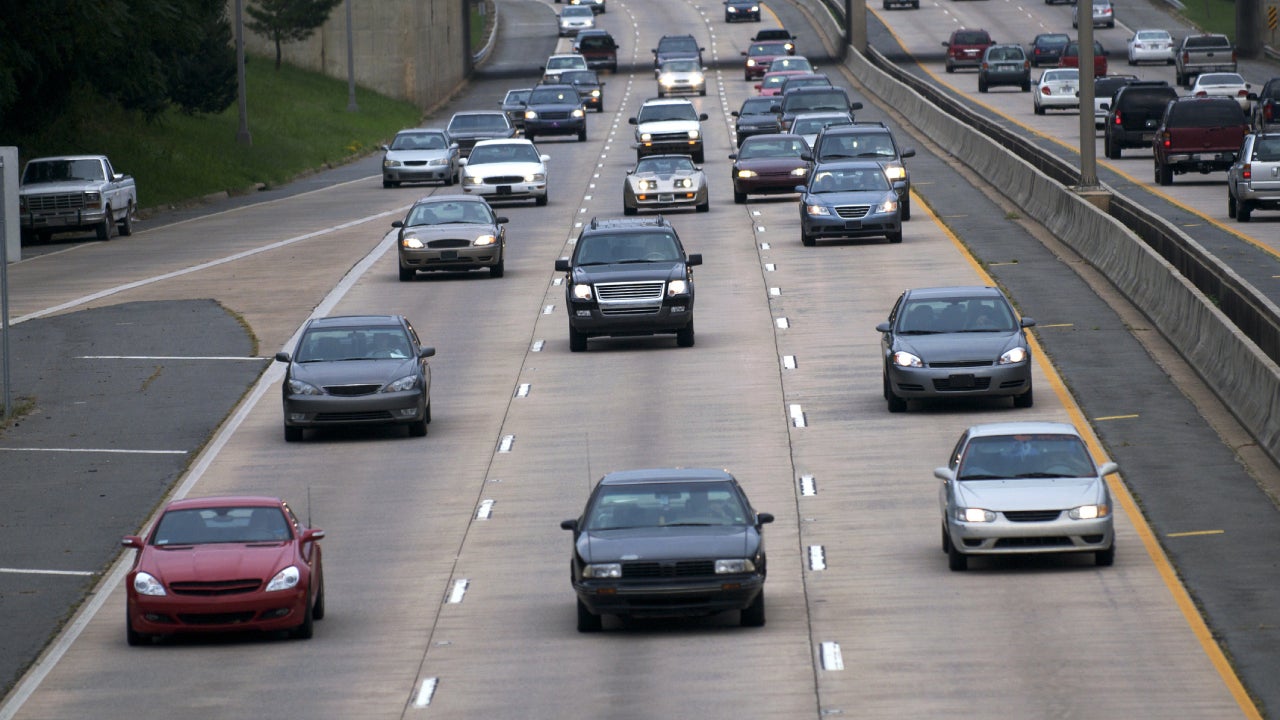How many accidents can you have before your insurance drops you?




Can an insurance company drop you after one accident? What about after more than one? These are good questions, and they may hit close to home if you have past infractions on your record. Every insurer has its own rules regarding car insurance with multiple accidents, so there’s no single answer. There are likely to be a range of factors—such as the severity of the accident and amount of any claims filed—that will all play into your insurer’s decision on whether to continue your policy at renewal time. If you find yourself in a situation where you’re worried about your coverage—say, you have been involved in two at-fault accidents in one year, for example—Bankrate’s guide on this topic may help you find the best coverage for your circumstances.
Car insurance with multiple claims
Whether you are looking to purchase a new insurance policy or renewing your existing car insurance, insurers often use your claims history to help determine if you qualify for insurance and what your premium will be. Insurance companies also use your age (except in Hawaii and Massachusetts), location and driving record as qualifying factors for coverage.
How claims history is used can vary by insurance company. Some may only look back three
years, while other companies may go back as far as five years or more. Many carriers consider the frequency of claims over the severity, and some may only use claims that meet a minimum dollar threshold to determine eligibility and rates.
While the number of claims you have filed in the last few years matters, so does the type of claim filed. For instance, a claim on an accident you didn’t cause may not be treated as severely as one for an at-fault accident that you did cause.
Read more: How is fault determined in a car accident?
Can insurance drop you for too many claims?
Yes, your car insurance company can drop you if you file too many claims. Most often, an insurer will send a nonrenewal letter prior to your next renewal period, advising that your insurance will be terminated at the end of the policy period. In order to maintain continuous coverage, you should look for insurance with another carrier. You may need to consider nonstandard companies offering multiple accidents car insurance, often called high-risk car insurance. Insurers generally can’t cancel your coverage mid-term, so if you are found to be too high-risk for a particular carrier, you may have some time to search for a new company.
How many accidents can you have before your insurance drops you?
The threshold for canceling car insurance after multiple accidents differs by insurance carrier, the type of claim, the payout amount and the number of claims you have filed in a three-year period. But having more than one at-fault accident generally gives you a higher chance of being dropped by your insurance company.
Read more: What to do if your car Insurance is canceled
At-fault versus not-at-fault claims
Although the penalties are often more severe for at-fault accidents, both at-fault and not-at-fault insurance claims can increase your premiums. Hitting another vehicle while changing lanes on the highway or rear-ending one at a red light are examples of at-fault accidents. In these cases, your bodily injury liability and property damage liability will likely help cover the other driver’s costs. And if you have collision coverage, that could help cover repairs for your own vehicle.
In contrast, if someone changes lanes into your vehicle or rear-ends it when you’re stopped at a red light, it would usually be considered a not-at-fault accident. Whether a claim is determined to be at fault or not at fault typically changes how your car insurance rates are impacted and could affect your coverage qualification.
Average annual premiums for drivers with an at-fault accident by carrier
The rate you pay for car insurance tends to vary by insurance carrier — and so does the amount you will pay after an at-fault accident. The table below shows the average car insurance increase after an at-fault accident by the insurance companies with the largest market share in the nation.
| Company | Average annual full coverage premium before at-fault claim | Average annual full coverage premium after at-fault claim | % increase in average annual full coverage premium |
|---|---|---|---|
| Allstate | $3,054 | $4,083 | 34% |
| Amica | $2,925 | $3,481 | 19% |
| Erie | $2,036 | $2,280 | 12% |
| Geico | $2,023 | $2,890 | 43% |
| Nationwide | $1,905 | $2,663 | 40% |
| Progressive | $2,254 | $3,415 | 52% |
| State Farm | $2,743 | $3,522 | 28% |
| The Hartford | $2,694 | $5,530 | 105% |
| USAA | $1,921 | $2,760 | 44% |
What if I have accident forgiveness coverage?
Your situation may be somewhat different if you have purchased an optional type of coverage called accident forgiveness. As the name suggests, this insurance “forgives” you for one at-fault accident, in other words, your policy premium will not increase after a single accident in which you are found to be at fault.
There are some caveats: not all insurance companies offer this type of coverage, for one thing, and even for those that do, it may not apply to every type of accident. It’s also important to note that having accident forgiveness does not remove the accident from your driving record, and your state’s DMV will still retain a record of it. If your accident results in civic penalties or points on your license, accident forgiveness insurance does not remove them.
Do collision claims increase your premium?
Understanding how collision claims affect car insurance can encourage safer driving. In general, collision claims cost insurers more than other types of claims. Therefore, involvement in a collision could result in being categorized as a higher-risk driver in the eyes of insurance companies. For that reason, it’s not uncommon for your insurance premium to increase after an accident.
If you’re filing a collision claim, it may mean you collided with either a vehicle or a stationary object while driving. Hit-and-run incidents also typically fall under collision coverage, as the victim’s insurance may help pay for the damage if the at-fault driver cannot be found. In contrast, incidents that are covered by comprehensive insurance primarily involve instances when you aren’t in the vehicle (e.g., vandalism, theft, etc.).
Do comprehensive claims increase your premium?
Generally, filing a comprehensive claim does not increase your premium by as much as a collision claim would. If you qualify to file a claim under collision, you were likely determined to be at fault.
However, filing a claim with any damages paid can be used to assess your risk when the insurance company renews your policy. So you may still see a small rate increase after filing a comprehensive claim.
Frequently asked questions
Methodology
Bankrate utilizes Quadrant Information Services to analyze October 2024 rates for all ZIP codes and carriers in all 50 states and Washington, D.C. Rates are weighted based on the population density in each geographic region. Quoted rates are based on a single, 40-year-old male and female driver with a clean driving record, good credit and the following full coverage limits:
- $100,000 bodily injury liability per person
- $300,000 bodily injury liability per accident
- $50,000 property damage liability per accident
- $100,000 uninsured motorist bodily injury per person
- $300,000 uninsured motorist bodily injury per accident
- $500 collision deductible
- $500 comprehensive deductible
To determine minimum coverage limits, Bankrate used minimum coverage that meets each state’s requirements. Our base profile drivers own a 2022 Toyota Camry, commute five days a week and drive 12,000 miles annually.
These are sample rates and should only be used for comparative purposes.
Incidents: Rates were calculated by evaluating our base profile with the following incidents applied: clean record (base), at-fault accident, single speeding ticket, single DUI conviction and lapse in coverage.
Why we ask for feedback Your feedback helps us improve our content and services. It takes less than a minute to complete.
Your responses are anonymous and will only be used for improving our website.
You may also like

Penalties for driving without insurance in Massachusetts

How a speeding ticket impacts your insurance in Arkansas

Factors that impact your cost of car insurance

How do deductibles impact your car insurance?
